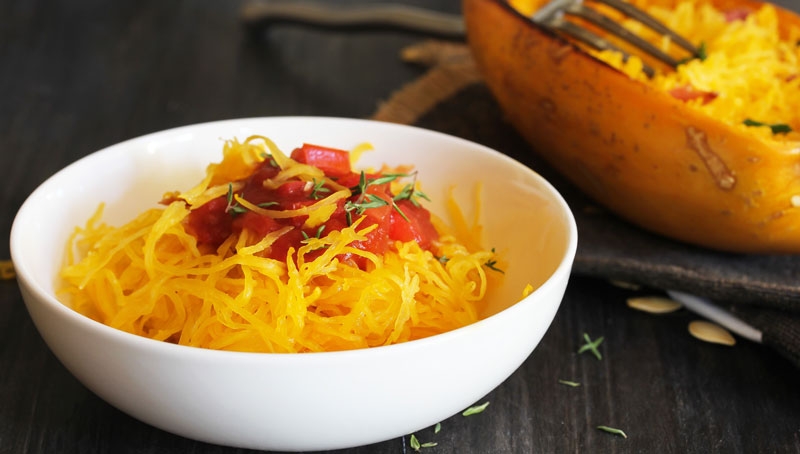Home Remedies For Allergies
March 21, 2019 | Food Lion


Fighting Allergies with Food
It seems like almost monthly there's more information coming out about food allergens. There are certain ingredients, like peanuts, shellfish, and gluten, that make their way to news broadcasts often. Other common food triggers include soy, fish, wheat, tree nuts, milk, eggs, and dairy products. Fortunately, most produce that you can buy is free from allergens. So, in addition to being extremely good for you, there's little concern about triggering food allergies when you eat fresh veggies. Food Lion is here to help you plan more meals around foods that won't activate allergies.
Throughout Food Lion's website, you can find recipes that'll help you create complete meals you and your family can enjoy, even if you have severe allergies. In addition, below are three recipes that you can make easily during the week that not only shouldn't trigger allergies but that also feature foods that can actually inhibit allergic reactions. Some of the highlights you can find on the site are Cauliflower Baked Ziti, which is another noodle-free dinner; Garlic Roasted Brussels Sprouts and Butternut Squash, which is a vegetable-heavy side dish that eats like a meal; and even desserts like Vegan Chocolate Avocado Dirt Pudding, which is both vegan-friendly and gluten-free.
Spaghetti Squash with Marinara Sauce
PREP TIME: 15 minutes COOK TIME: 4 hours TOTAL TIME: 4 hours, 15 minutes SERVES: 4
Spaghetti is a favorite for kids and adults alike, and most of the ingredients might already be in your pantry. One unusual ingredient you can find at Food Lion for this recipe is spaghetti squash, which is part of the winter squash family. When cooked through, this gourd's flesh scrapes into flavorful strands that resemble spaghetti noodles. Because there's no pasta, there's no gluten — and no inflammation or allergies. The sauce features healthy, allergy-free ingredients such as onion and bell pepper, which have quercetin — a known histamine inhibitor. The tomatoes provide lycopene, which is a heart-healthy nutrient that also has antioxidant properties.
INGREDIENTS
For the spaghetti squash:
- 1 4-pound spaghetti squash
- 2 tablespoons olive oil
- Salt, to taste
- Ground black pepper, to taste
For the marinara sauce:
- 2 cups crushed tomatoes, canned
- 2 cups diced tomatoes, canned
- 1 tablespoon olive oil
- 1 medium-sized sweet onion, peeled and diced
- 1 large red bell pepper, cored and diced
- 1/4 cup garlic, peeled and minced
- 2 tablespoons oregano, dried
- 2 tablespoons sweet basil, dried
- 2 bay leaves
- 1 teaspoon salt
- 1 teaspoon ground black pepper
DIRECTIONS
- In a large slow cooker, add the tomatoes and tomato sauce. Set the cooker to high.
- In a large skillet, heat the olive oil over medium heat. Add the onions and bell pepper. Sauté until the onions are translucent, about 10 minutes. Add the garlic and sauté for about two minutes. Drain and add these to the slow cooker.
- Add the oregano, basil, bay leaves, salt, and black pepper. Blend well.
- Simmer your sauce in the slow cooker for about four hours. Remove the bay leaves before serving.
- During the last hour for the sauce, prepare the spaghetti squash.
- Preheat the oven to 400 degrees Fahrenheit.
- Slice the squash in half lengthwise carefully, using a sharp knife.
- Scrape the inside of the squash with a spoon to remove the seeds. Discard the seeds or reserve them to roast later on with oil and salt.
- Rub the inside of each half of the squash with olive oil. Season with salt and black pepper and place the squash cut-side down on an aluminum foil-lined baking sheet.
- Roast the squash for at least 40 minutes, turning the squash sections halfway through cooking.
- Remove the squash from the oven and allow it to cool. Use a fork to remove the flesh from the squash. Reserve the squash strands in a bowl.
- Add some squash to the center of a large plate and make a well in the center. Top it with marinara sauce and serve.
Pan-seared Wasabi Tuna Fillets with Pineapple Salsa
PREP TIME: 15 minutes COOK TIME: 10 minutes TOTAL TIME: 25 minutes SERVES: 4
Coldwater fish, like salmon, cod, sardines, and tuna, are loaded with heart-healthy omega-3 fatty acids that can help lower blood pressure levels. Most fish, especially fatty fish, are generally free from allergens, especially the wild-caught variety. Wasabi is a powdered Japanese horseradish that's often made into a paste and goes especially well with tuna.
INGREDIENTS
For the tuna:
- 3 tablespoons olive oil
- 2 teaspoons powdered wasabi
- 4 6-ounce tuna fillets, preferably wild caught
- Salt, to taste
- Ground black pepper, to taste
- Fresh cilantro, minced for garnish (optional)
For the pineapple salsa:
- 1 cup fresh pineapple, diced
- 1/2 cup red bell pepper, roasted and diced
- 2 tablespoons chopped jalapeño pepper
- 2 tablespoons fresh cilantro, minced
DIRECTIONS
- Add the pineapple, bell pepper, and jalapeño pepper to a small mixing bowl and combine well. Put in the refrigerator to chill briefly.
- Add the olive oil and wasabi to another small mixing bowl and stir well with a whisk.
- Pat the tuna fillets dry with a paper towel.
- Heat a nonstick skillet on medium-high.
- Brush one side of each tuna fillet with the wasabi mixture. Place the tuna fillets in the skillet oil-side down. Brush the other sides of the fillets with the remaining wasabi mixture.
- Sear the tuna fillets for about four minutes. Turn the fillets over and sear for another four minutes for medium rare. Cook a minute or two longer on each side for tuna that's more cooked.
- Remove the fillets from the skillet and allow them to rest for five minutes.
- Spoon a small amount of the pineapple salsa over the center of the plate and top with a tuna fillet.
- Garnish with minced cilantro if desired.
Mixed Greens with Garlic and Honey
PREP TIME: 20 minutes COOK TIME: 3 to 6 hours TOTAL TIME: 3 hours, 20 minutes to 6 hours, 20 minutes SERVES: 4-6
Kale is loaded with nutrients that are great for you, including different vitamins, fiber, potassium, antioxidants, and iron. For people avoiding dairy, this is an ideal source of calcium ― as are collard greens, which also bring folate to the equation along with the vitamins and minerals you'll find in kale. Mixing the greens the way you'll do in this recipe takes these superfoods to the next level. Collards need a longer cooking time to get tender, so a slow cooker is ideal for this recipe. Greens can be slightly bitter too, so adding a bit of local honey and smoky turmeric sweetens them up a bit and may help limit reactions from pollen allergies at the same time.
INGREDIENTS
- 1 pound collard greens
- 1 pound kale
- 2 tablespoons olive oil
- 2 tablespoons minced garlic
- 1 cup vegetable stock
- 1 teaspoon ground turmeric
- 1 tablespoon local honey
DIRECTIONS
- Fill your sink with cool water and add the collard greens and kale to it. Push the leaves down several times to loosen any remaining dirt. Rinse the leaves under cool running water.
- Pat the leaves dry with paper towels and shred them into bite-sized pieces, adding them to a large bowl.
- Heat the olive oil in a large Dutch oven over medium heat. Add the greens to the Dutch oven in batches as they wilt down. Stir frequently.
- Add the minced garlic and cook for another two minutes.
- Set your slow cooker on high and add the vegetable stock, turmeric, and greens. Cook for three hours (you can also set it on low and cook for six hours). Stir frequently.
- Drain the greens in a colander and add them to a serving bowl. Drizzle on the honey and stir well before serving.






Create Your Display Name